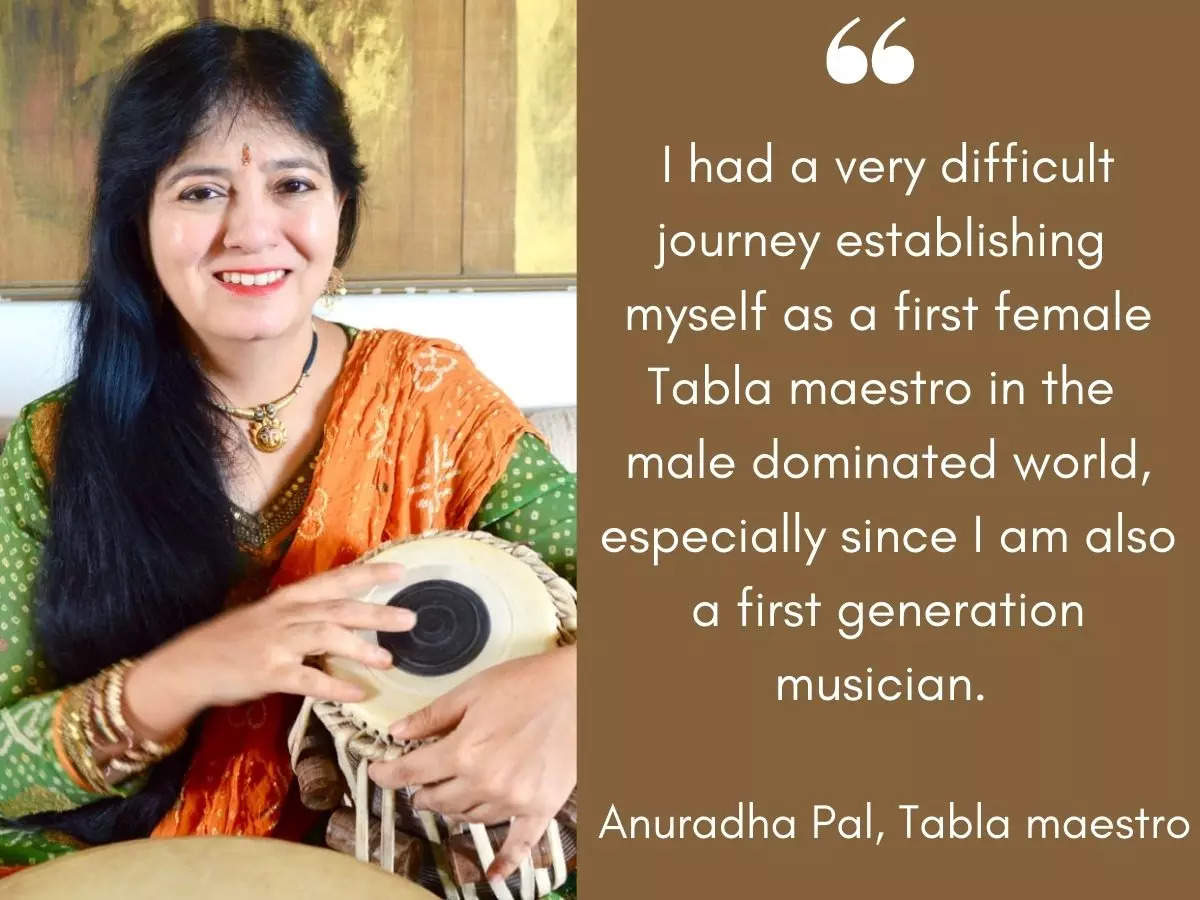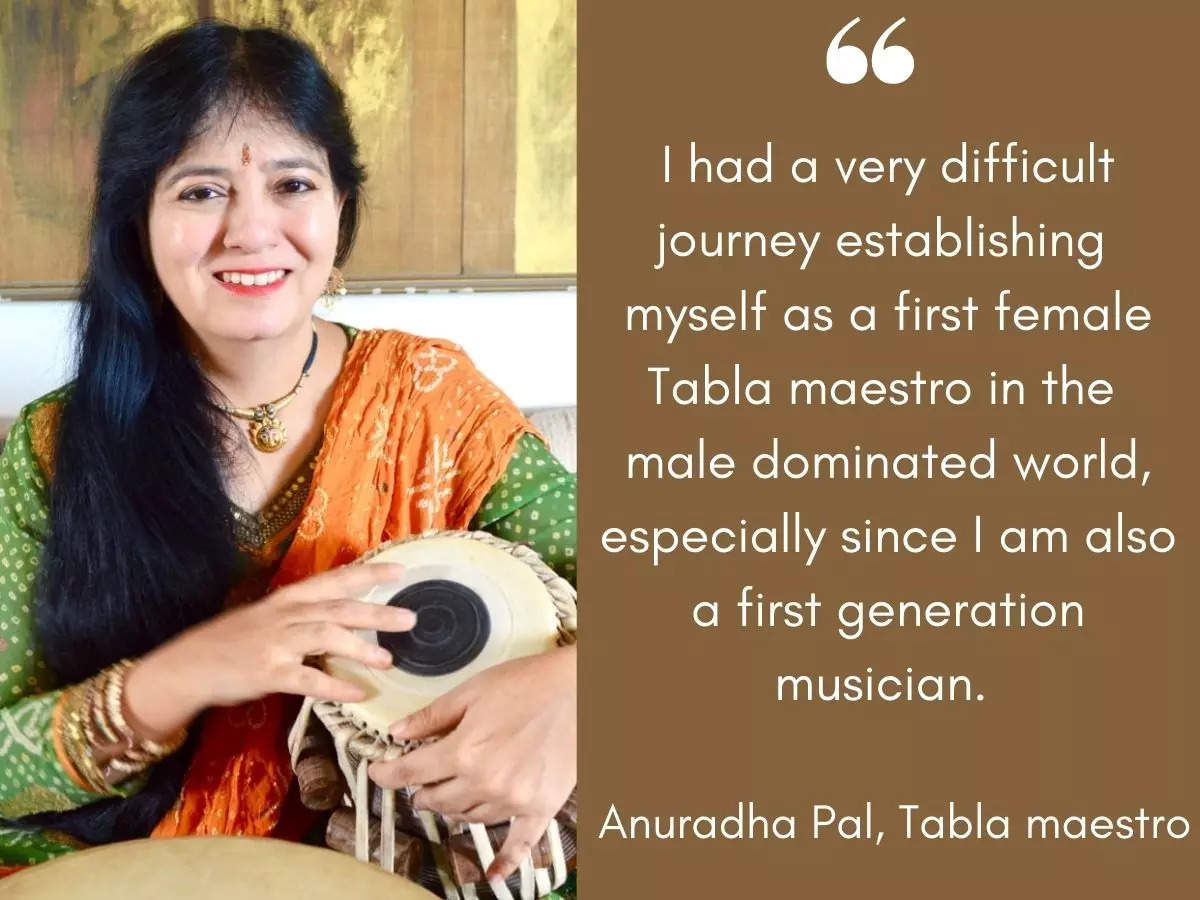Breaking the glass ceiling: Female music directors have had a tough journey in a male dominated industry – #BigStory | Hindi Movie News

[ad_1]
Is the world of film music skewered in favour of its male performers? The answer to that question is a lot more complicated than a simple ‘yes’ or ‘no’. In this week’s Big Story, we explore the journey of India’s female composers and musicians. We’re not getting into the playback singers’ domain because names like Lata Mangeshkar and Asha Bhosle have dominated that landscape and left an indelible impression. But when it comes to music directors and instrumentalists the stories are different.
Between the late 40s and 2023 the field of music composers has been dominated by men. But, remarkably, between the mid-30s and mid-40s it was female music directors who held fort. Jaddanbai and Saraswati Devi were the prominent musicians of the 1930s talkies era alongside male singers-composers like KC Dey, Pankaj Mullick and C Ramchandra. While Saraswati Devi composed music for hits like Achhut Kanya (1936), Jeevan Naiya (1936), Miya Biwi (1936), Vachan (1937), Bandhan (1940), Jhoola (1941) and Aamrapali (1945), Jaddanbai made music for films like Prem Pariksha (1934), Talashe Haq (1935), and Madam Fashion (1936).
Moving to the 40s and 50s the scenario changed as names like Anil Biswas, Naushad and SD Burman became dominant followed by Shankar-Jaikishan, OP Nayyar, Salil Chowdhury and more. During this time, there was just one female composer who managed to make a mark – Usha Khanna. Speaking about breaking through and making a mark during the time, Usha Khanna says, “I wasn’t the first one. Jaddan Bai and Saraswati Devi were there before me. There was no other female composer when I started my career. I was very young, I started at the age of 17. Other musicians and technicians used to keep staring at me and wonder how could such a young girl be a music director. My contemporaries Shankar Jaikishen and Naushad were many years senior to me. People used to ask, ‘will she be able to compose songs for a film?’ Despite that I received a lot of love and encouragement from my peers.”
Film historian and expert Pavan Jha recalls the 30s and says, “The film industry has been a male-dominated industry. If there was no Lata Mangeshkar, we wouldn’t have seen women in any female singers or musicians. She ruled the male dominant industry. It started with Fatma, Jaddanbai, and Saraswati Devi who were musicians and very big names. All of them started in the 1930s. Unfortunately, you won’t find a female leading a group of males. Because the music director has to be a leader who drives an orchestra. Jaddanbai was a very powerful lady. Unless you had that character in your own persona, it was very difficult for a female back then.”

Is there a glass ceiling for female musicians in the film industry?
The topic is debatable, but historically it has been commented and accepted that the odds are generally favourable for men in any competitive environment or professional field. India’s Oscar winner composer MM Keeravani explains the disparity and says, “There are female singers, instrumentalists and sound recordists, but not many composers. I worked with Rani Malik. I also worked with Rhea Mukherjee on the Hindi version of Naatu Naatu. In the Jagjit Singh and Chitra Singh duo, Chitra Singh composed equally. Nobody is preventing or obstructing anybody from becoming a certain artist. Maybe women are not showing interest in composing.”
He explains that there’s a difference in opportunities for men and women but it can’t be blamed on any singular entity. He says, “Abroad, there are a lot of female composers. In India, there’s disparity. But to my knowledge, neither the film industry nor the male composers are the reason for that. Nobody can be blamed because composing music is a talent and you need to focus on talent. There are not many female composers and it has to be debated.”
Usha Khanna confesses, “I worked for more than 50 years, no one ever stopped me from composing or working in films. If the film industry had a problem with working women, I would not have found any work.”
Do male singers, technicians or colleagues in the film industry feel uncomfortable working with female musicians?
Usha Khanna reveals it wasn’t easy for her to blend into the film industry milieu because of her gender. She explains, “The only challenge was accommodating me in music sittings. I was a girl and the people I had to work with – Raj Kapoor saab, Dev Anand saab, Shankar-Jaikishan and others were all men. The usual practice was to hold the music sittings in the evening or at night, and everyone would sit with a drink or a smoke. Having a girl in the midst of such an environment wasn’t possible so I didn’t get as many projects as I could have.”
MM Keeravani’s cousin MM Sreelekha had revealed in a recent ETimes interview, “Not an inhibition, but they have a second thought as they can’t discuss everything freely with a woman as they do with a man. In that way maybe they have some second thoughts. But when it comes to work I’m very professional but how can I convey it to them and to how many people I can tell that? They’ll have their reservations and I can’t do anything about that.”
As a female composer or musician does it ever become difficult to put the foot down and push an idea?
Usha Khanna never faced this problem. She reveals, “I worked with Mohd Rafi, Mukesh, Kishore Kumar, Lata ji, Asha ji and so many more. Everyone sang for me without hesitation. I was never troubled by any of my singers. Since I was younger to all of them, everyone used to talk to me with adulation and love.”
Tabla maestro Anuradha Pal reveals she had to overcome obstacles but her determination and dedication helped her. “I had a very difficult journey establishing myself as a first female Tabla maestro in the male dominated world, especially since I am also a first generation musician. I had to develop strong domain knowledge and focus on 3Cs – Courage, Conviction, Creativity and I followed 3Ds – Dedication, Discipline, Domain Knowledge. This I did to create rhythmic innovations like Anuradha’s Tablas Sing Stories, Stree Shakti, SuFoRe and Recharge groups and collaborations with Indian, Folk, Jazz, African, Latin, Rock and Flamenco.”
Pavan Jha brings up an important point as he says, “Unlike filmmaking which happens in open spaces, music creation and lyric writing happen in a closed space which the women back then were not comfortable with.”
Composer Rimi Sinha Basu reveals there can be issues while working with men. She says, “Unfortunately in our country this trend was established right from the beginning. We hardly had any female composers. Everyone had accepted this fact and were very used to it. But the fact remains that a female composer too can be equally competent and talented is not easily acceptable.”
Violinist Shruti Bhave who has worked on Thugs of Hindustan, Me Vasantrao and Amit Trivedi’s Bombay Talkies says it’s the talent that matters and not the gender. She explains, “Once, I was forced to take a set of artists who were not good. They happened to be women. As artists, they were very weak. I said, ‘I need good artists’. I am ready to take a female musician if she is matching my expectations. If she is not, then I will not take her. If you are not good at your art, then you cannot complain about not getting opportunities. I have never seen a great artist sitting at home without work.”
The question of pay disparity: are women paid enough?
Anuradha Pal explains, “Payment can be perceived in terms of currency, or in terms of love and adulation from the audience. Fortunately, while I usually get paid as much as any top male artist, I, like several other top artists, whole heartedly also accept concert assignments, even if the organizer cannot pay more than the travel and stay. While I do acknowledge that there is some way to go before we achieve absolute pay parity, you must choose this profession, only if you have the passion and patience to face such hurdles and emerge stronger.”
Keyboard and arranger, Amruta Thakur Desai, “Everyone wants to be a singer. And take an easy road to fame. Being a pro musician requires a lot of homework, struggle. And there is no job guarantee as such. You have to struggle every month and every week. Even if you establish yourself, you always need to update. And not many are ready to do this hard work. They just want fame.”
Rimi Basu adds, “Unfortunately the disparity still exists. However this can be bridged through interventions by top male composers in the industry and interventions by music federations.”
Shruti Bhave says, “When you are a good artist and have worked hard to be where you are, you can demand a certain amount. But sometimes, the producers say that they don’t have the budget. But at times, women outshine men and earn more. Pay parity is based on the performance you give and the way you portray yourself because of how you look and all. Sometimes, men get paid less than the women, too.”

Women are a force to reckon with
MM Keeravani points out that female composers have always had opportunities and chances to make an impact. He says, “S Janaki is a very good composer. She composed Meera Bhajans. She composed for movies also but that didn’t come into focus. P Bhanumathi Ramakrishna was a legendary singer and composer. And everyone talks about Usha Khanna, too.”
Usha Khanna also feels women can make a mark in the music industry if they persevere. She says, “I never asked for work, I only worked on those films and projects where someone approached me for my talent. Otherwise, I never went to a producer, star or filmmaker to ask for work. People used to ask me, despite giving so many hits, why do I keep composing for B and C-grade films. I always told them, these B and C classifications are given by us. I only focus on making music and melody. To me it doesn’t matter what the budget or scale of a production was. My songs used to find their audience.”
Pavan Jha says, “The male-dominant industry never lets the women settle in higher places. That is why Lata Mangeshkar is very important. She brought respect to everyone. She ruled like a queen. Unfortunately, there were no icons when it comes to composers or lyricists.”
Usha Khanna sums up the current scenario for female composers when she opines, “Modern girls are more driven to look glamorous. They’re not inspired to make great compositions, they’re inspired to look good on camera, onstage or on social media.”
Having said that, modern music composers like Sneha Khanwilkar, Jasleen Royal, Rachita Arora, Sonal Pradhaan, Parampara Thakur, Payal Dev, Alokananda Dasgupta and more are making an impact with their efforts in contemporary films. Have they closed the gap on their male peers or whether they’ll be able to do that in the near future is going to be an area of interest for movie buffs.
#Breaking #glass #ceiling #Female #music #directors #tough #journey #male #dominated #industry #BigStory #Hindi #Movie #News





